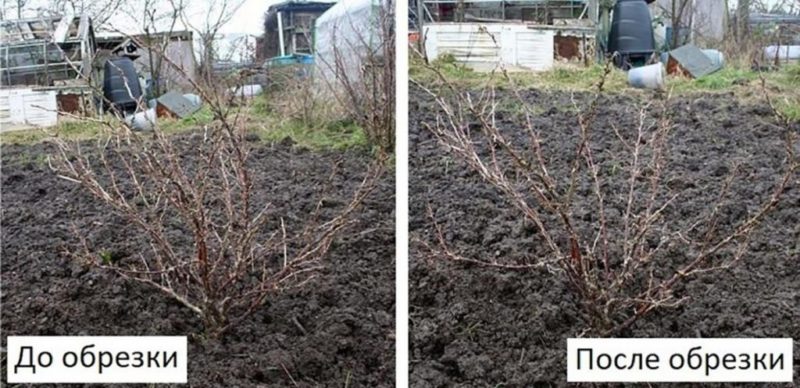Gooseberry pruning: goals, timing, technology
To harvest a rich gooseberry harvest, gardeners take care of the plant all year round: it loves moisture, mineral and organic fertilizing, and mulch. An obligatory stage of care is pruning. It is sanitary and rejuvenating, thinning and shaping. If you do not prune, the bush will lose not only its decorative appearance, but also some of the tasty and juicy berries. How to cut gooseberries in summer, after harvest, in spring and autumn, we will consider further.
The content of the article
Do I need to cut gooseberries
Gooseberries form a large number of new shoots every year, so they need to be pruned. If you do not remove the shoots and old branches, it becomes more difficult to harvest every year.
It is believed that only thorny varieties are pruned. This is not the case, all plants need the procedure - with and without thorns. Carry out pruning in spring or in autumn, depending on the growing region, plant age, climatic characteristics.
Gooseberry Pruning Goals
How to prune a shrub? There are several types of gooseberry pruning: sanitary, anti-aging, shaping, thinning.
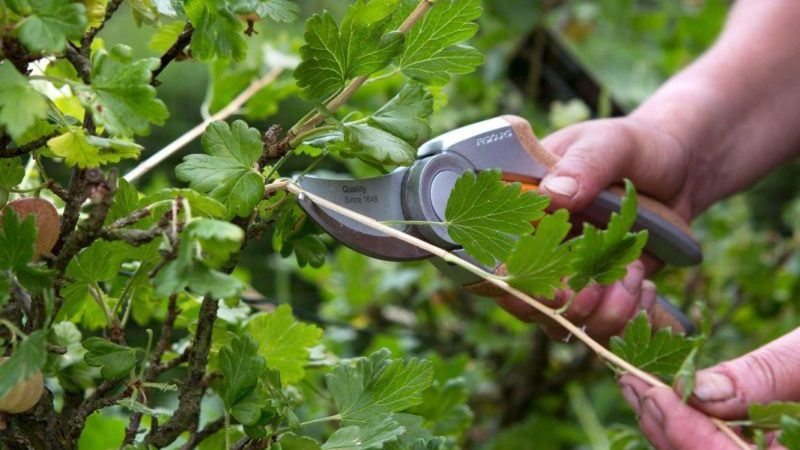
Each pursues its own goals and performs certain tasks:
- For sanitary pruning remove all damaged, diseased and old shoots. Otherwise, gooseberries are often sick, become a favorite place. insect pests... The procedure is carried out in spring or summer. In the fall, sanitary pruning will do more harm than good, since the plant will not recover until the onset of cold weather.
- Anti-aging pruning suitable for mature shrubs whose branches have not been removed for a long time. The purpose of the procedure is to extend the life of the gooseberry. To do this, step by step, within 1-2 years, old shoots are pruned, and young branches at this time gradually form a new bush. A common mistake many gardeners make is to remove all diseased branches at once. The right time for the procedure is spring.
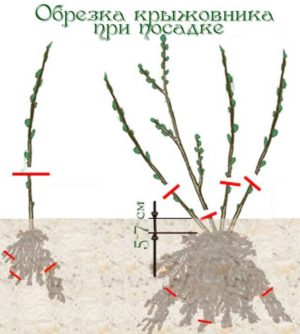
- Formative pruning (gooseberry shaping) carried out for decorative purposes, so that the crown looks well-groomed and does not grow in all directions. The procedure is carried out for 3 years after planting, in early spring or in September. Remove branches growing inside the bush, shoots.
- Thinning (lightening) pruning carried out on shrubs from 5 to 10 years old. Its goals are similar to those of formative pruning. Gardeners remove branches lying on the ground and shoots that intersect with each other. The procedure increases yields and prevents the occurrence of diseases. Thinning pruning time is from late March to late April, depending on the growing region.
Pruning gooseberries in autumn
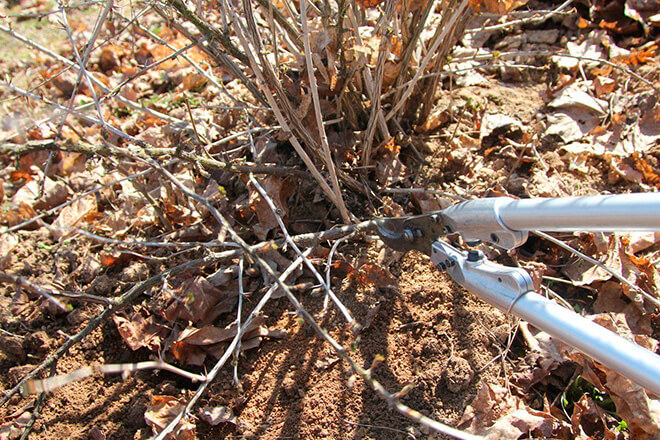
Autumn pruning prepares the plant for winter... For this, shoots and old shoots are removed, which can become a breeding ground for fungi and bacteria. Removing unnecessary branches eliminates the need to feed too many shoots, as a result, summer residents apply less mineral fertilizers. The shrub enters the winter strong and rejuvenated, which has a positive effect on spring fruiting. The procedure improves air microcirculation, provides free access to daylight.
When to pick gooseberries in the fall? The procedure is started 30–40 days before the first frost, after the plant has dropped all the foliage. They do this approximately in October, the exact dates depend on the region of cultivation. Often novice gardeners make a mistake: they remove the branches immediately after fruiting.As a result, warm weather encourages the formation of new growth, and you have to prune the bush again.
Attention! For pruning, a garden pruner is used, which is suitable for young and adult plants. It must be sharp, otherwise it will leave ragged cuts, which is why the shrubs often get sick. Convenient to use pruner with a rubberized handle - it does not slip during work. Before and after the procedure, the instrument is disinfected with a solution of potassium permanganate.
It is recommended to carry out formative pruning in the fall. There is a classic, trellis and standard. For gooseberries, the classic formation is most often used. It retains the natural shape of the bush, provides ventilation and good lighting. Slices are made 1.5 cm above the kidney. Sick and dry branches are removed immediately, the rest are shortened by 1/3. In plants older than 3 years, the root shoots are pruned, leaving the 3 most durable shoots and shortening them.
Whether to prune gooseberries in summer
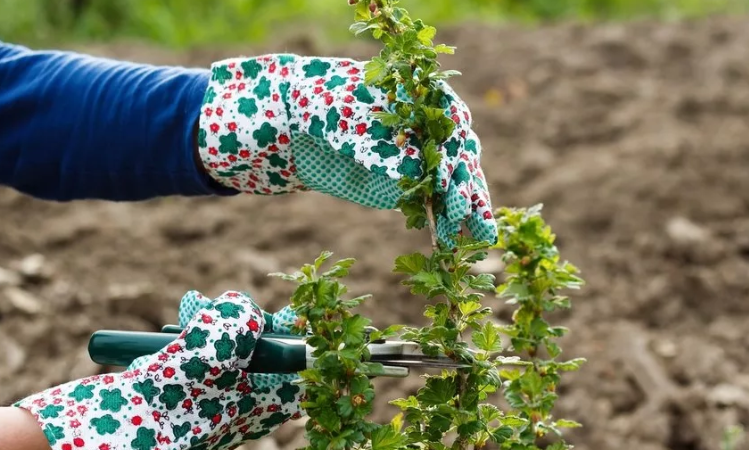
There is no consensus on pruning gooseberries in summer. Some summer residents say that this is the time for the ripening of berries, and it is forbidden to touch the shrub. The plant is left dormant, the procedure is postponed until autumn... Some gardeners carry out light pruning in the summer to increase yields. The crown is cut off, and no more than 7 leaves are left on each shoot. In August, zero shoots are removed, on which there are no fruits.
Whether or not to prune in the summer is up to each gardener to decide. First of all, it is recommended to pay attention to the condition of the bush. If, for some reason, they did not have time to carry out the procedure in the spring, and the bush is very thickened, in the summer it is allowed to remove old and diseased branches. At the same time, you cannot leave hemp, which in warm weather immediately occupy insect pests... If the shrub looks healthy, it is best to wait until fall.
Spring pruning
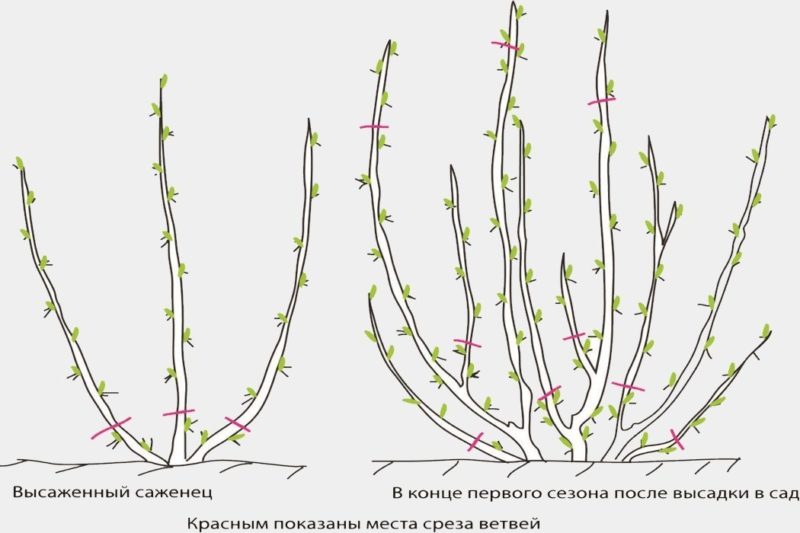
In the spring, gooseberries wake up early, so gardeners determine the timing of the procedure in advance. The plant is cut off immediately after the snow melts and the earth warms up to above-zero temperature... In the southern regions it is the end of March or early April, in the northern regions it is the beginning of May. In central Russia, pruning begins in the second half of May. The procedure provides illumination of the shrubs, prevents the appearance of pests and diseases. A properly pruned gooseberry ensures a rich and tasty harvest.
It is convenient to cut branches with long-handled pruners, especially when it comes to prickly varieties. Experienced summer residents are advised to wear welder's gloves so as not to get hurt. A lopper is used to remove branches with a diameter of more than 5 cm. In the spring, they carry out sanitary and anti-aging pruning. First, all diseased and affected by moss or lichen branches are removed to healthy wood, then shoots older than 5 years and zero branches are removed.
Attention! How to distinguish old branches from young ones? Older ones have thicker bark and dark color, many lateral branches. The older the branch, the thicker, darker and more branched it is.
In young shoots, it is not necessary to cut out all branches completely; it is enough to shorten them. Shoots are removed 3–5 cm above the buds, this provides better branching and quick fruit set. The branches will not interfere with each other. Intertwining shoots are cut closer to the branching point. After removing the damaged shoots, the shrub is examined, the lean and dry branches and their tails are removed, the curved lateral branches that grow too close to each other are cut off.
Is it possible to cut the lower branches of the gooseberry
The lower branches that lie on the ground are pruned during a rejuvenating or sanitary procedure. If you do not do this, when the fruits ripen, they will drop even lower. The berries will come into contact with the ground, which will quickly deteriorate or be attacked by insect pests.
Due to their location, such branches do not have enough sunlight, therefore their fruit-forming ability is at zero.They only take part of the food that could be used for the development and fruiting of healthy branches. If the gardener does not want to clear the shrub from the lower shoots, wooden supports will come to the rescue.
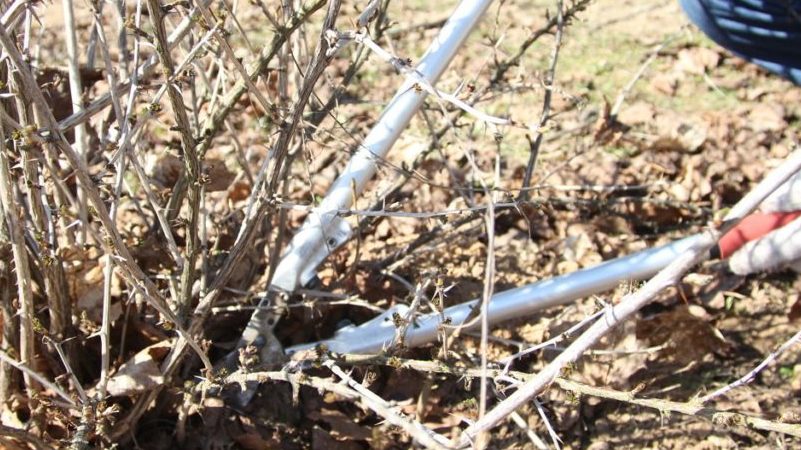
Care after pruning
After the procedure, the shrub needs to be cut and special care. If you do not pay attention to this, the plant will get sick and weaken.
Slice processing
It is recommended to process sections if their diameter is more than 2 cm. To do this, wait until the lesions dry out; it is forbidden to lubricate wet wounds. An uneven or torn cut is smoothed out with a garden knife and cleaned of sawdust. A garden var is used for processing. The tool is bought in a store or prepared independently.
How to cook:
- 3 parts wax;
- 2 parts propolis;
- 6 parts of rosin;
- 1 part turpentine.
Wax and propolis are melted in a water bath, crushed rosin is added, mixed and brought to a boil. Cool the mixture, add turpentine and stir again. Before processing, the var is kneaded in the hands so that it becomes more elastic.
Watering and feeding

Water the gooseberries 24 hours after the procedure. Water is directed to the root, it should not fall on the branches and even more so on the sections. The recommended water temperature is about + 10 ° С, cold watering will provoke the development of fungi and bacteria.
Important! Do not water the gooseberries immediately after pruning, as they need time to recover.
From dressings pay attention to root fertilizers. Complex preparations "Kemira" or "Agricola" have a beneficial effect on the development of fruits. Manure, double superphosphate, and bird droppings are responsible for the formation of green mass. Fertilizers are applied after watering, preferably on a dry and calm day.
Loosening and mulching the soil
They loosen and mulch the soil throughout the entire ripening period of the berries. Experienced summer residents do this immediately after pruning to provide the gooseberry with oxygen. Loose the soil to a depth of no more than 5 cm so as not to damage the root system.
The shrub is mulched with mown grass, hay, sawdust, river sand. Mulch retains moisture in the ground, which is especially important in regions with hot and dry summers.
Conclusion
How to rejuvenate and peel gooseberries for good fruiting? There is only one answer: regularly prune old and diseased branches, carry out anti-aging, thinning and sanitary pruning. To do this, use sharp secateurs and mittens so as not to get hurt or pricked. Most often, gooseberries are cut in autumn or spring, less often in summer. Remove old, damaged, null branches to increase yields and protect the plant from diseases and pests.
